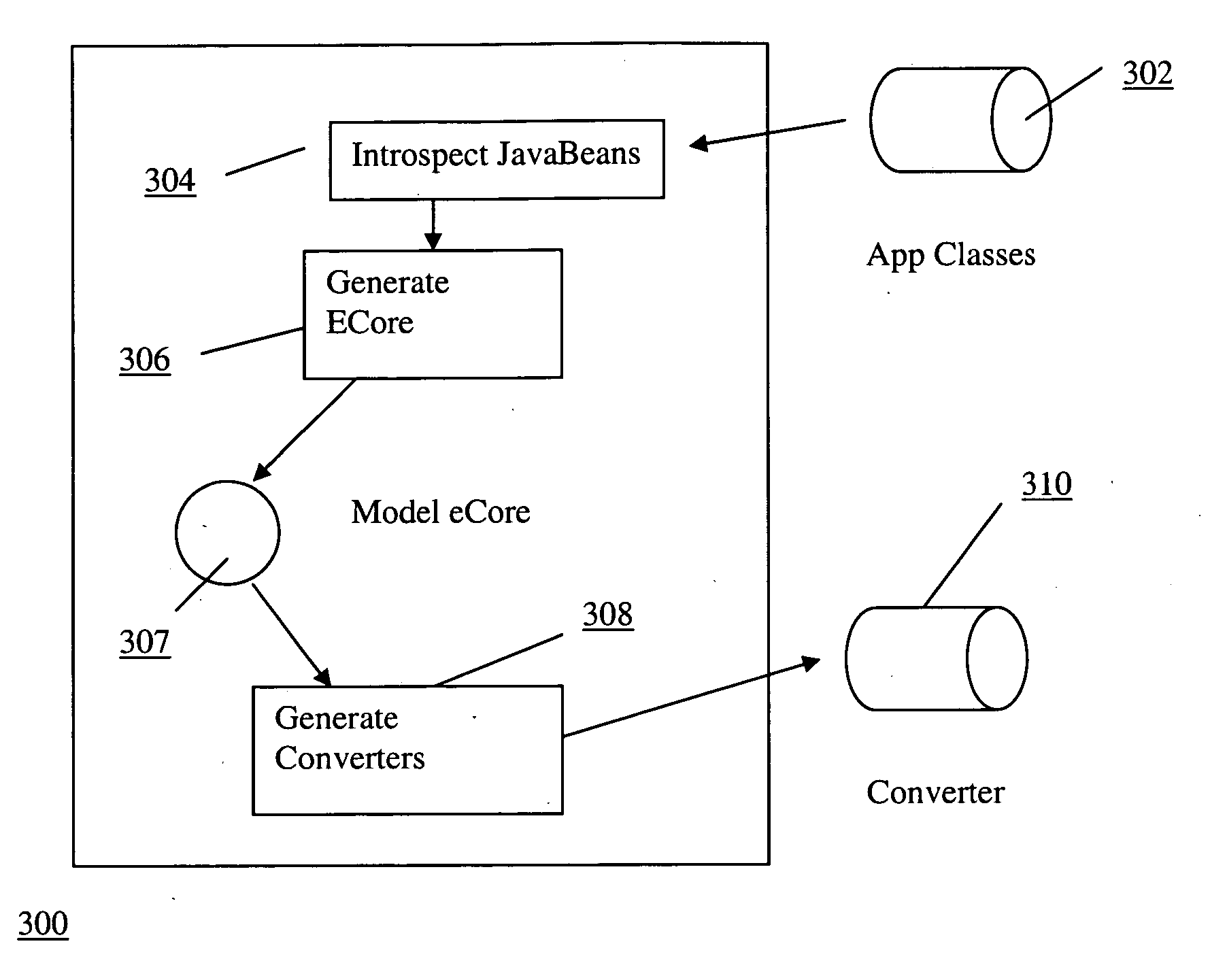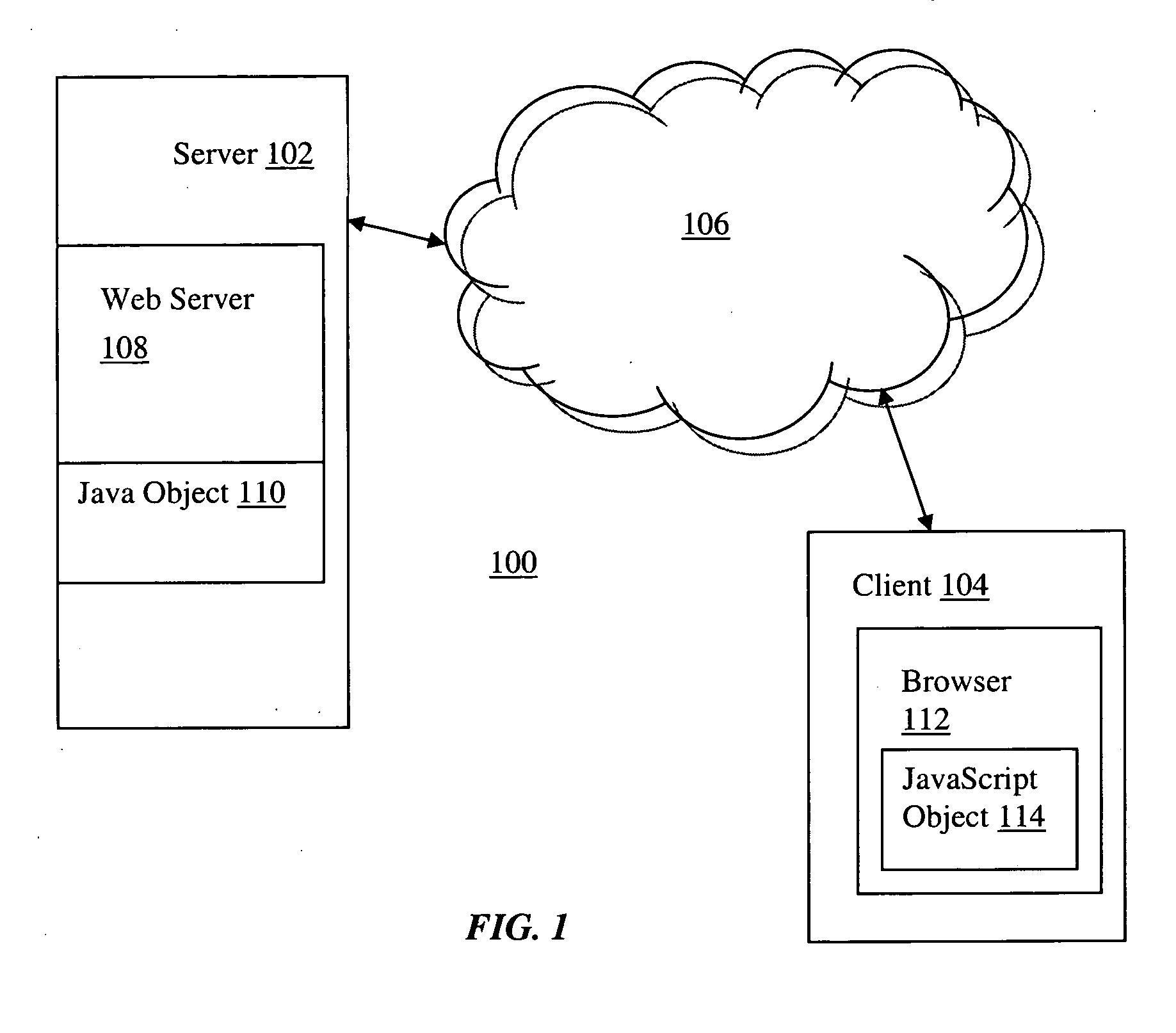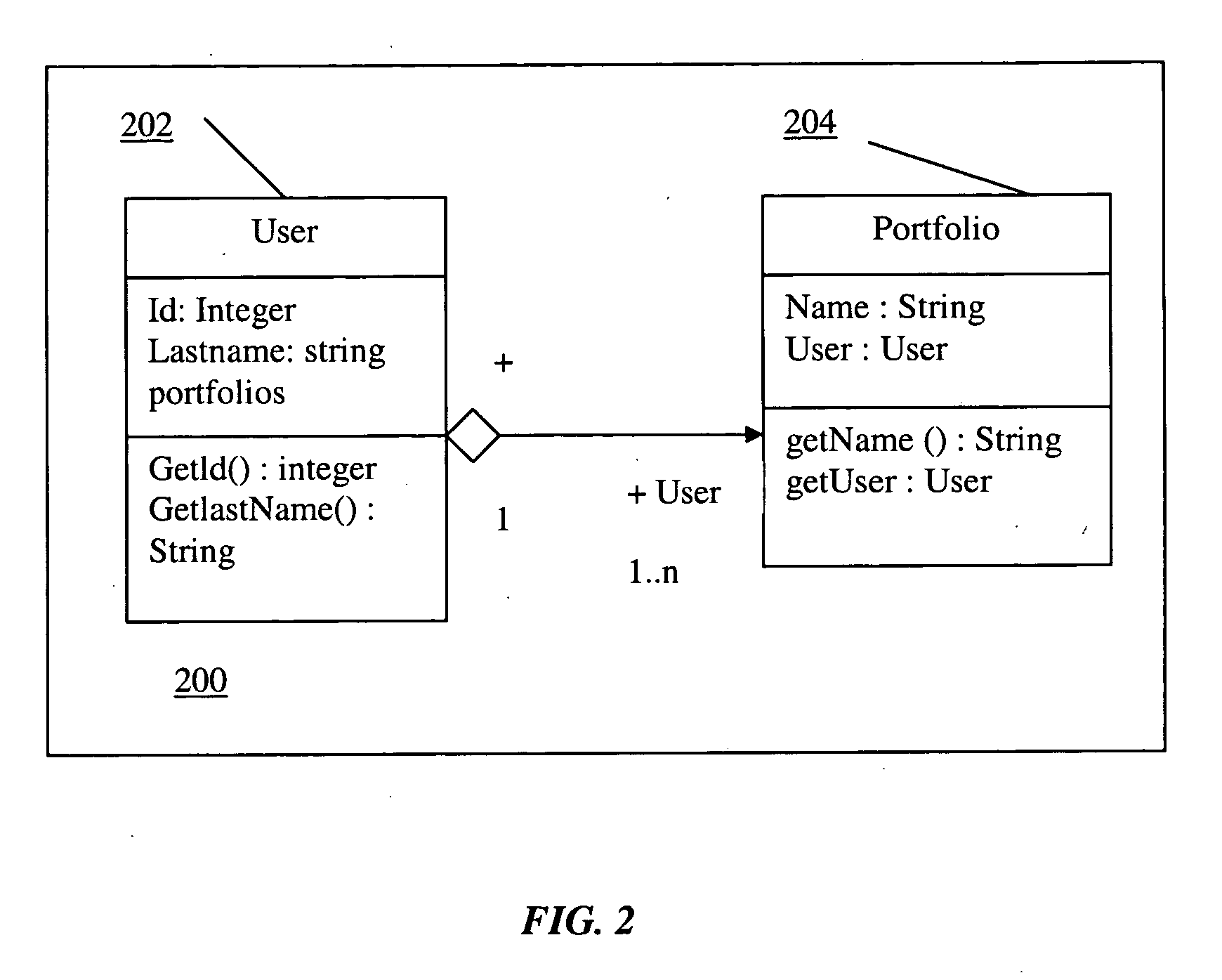Method and system for retaining formal data model descriptions between server-side and browser-side javascript objects
a technology of javascript objects and data model descriptions, applied in the field of information technology, can solve problems such as problems such as inability to support xml data islands in all browsers, and require significantly more processing power than plain javascript data structures, and achieve the effect of less transmission overhead
- Summary
- Abstract
- Description
- Claims
- Application Information
AI Technical Summary
Benefits of technology
Problems solved by technology
Method used
Image
Examples
Embodiment Construction
[0015] Referring to FIG. 1, there is shown a simplified version of a client-server network 100 illustrating an embodiment of the invention. A server 102 and a client 104 are coupled to each other via a network 106 (e.g., the Internet). The server 102 comprises a Web server 108 comprising one or more Java-based objects 110. The client 104 comprises a browser 112 comprising one or more JavaScript-based objects 114. Data on the browser 112 needs to be as formal as the data on the server 102 to enable truly rich applications. A similar programming model can be created for both the Java-based sever and the JavaScript-based client. By extending the methodology used to describe server-side data (with UML specifications for instance), we can create data models and data sets in JavaScript that are based on the data models and data sets that exist on the server in Java. This invention describes a mechanism to do so, in an efficient manner, in a way as to be compatible with more browsers than ...
PUM
 Login to View More
Login to View More Abstract
Description
Claims
Application Information
 Login to View More
Login to View More - R&D
- Intellectual Property
- Life Sciences
- Materials
- Tech Scout
- Unparalleled Data Quality
- Higher Quality Content
- 60% Fewer Hallucinations
Browse by: Latest US Patents, China's latest patents, Technical Efficacy Thesaurus, Application Domain, Technology Topic, Popular Technical Reports.
© 2025 PatSnap. All rights reserved.Legal|Privacy policy|Modern Slavery Act Transparency Statement|Sitemap|About US| Contact US: help@patsnap.com



